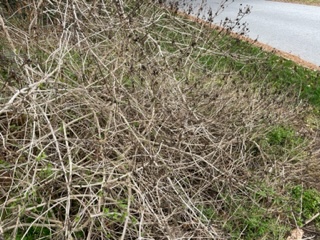Horticulture Hotline 02/28/22
By Bill Lamson-Scribner
I’m already being ask what should I do for my lawn, trees, and shrubs now. People are getting the itch. Being the soil test geek that I am, I always recommend taking a soil test to figure out what the soil is needing or has too much of. I still haven’t met anyone, and I hang around some pretty sharp agronomist, that can look at a lawn and say you need 15#/M of dolomitic lime on that lawn. They all use labs to test the soil.
With the weather forecast, some T-Methyl or Strobe G would be good as a preventive for brown patch / large patch. SeaHume would help get some minor nutrients in the grass plant (helping to protect the plant from another cold event) and encourage rooting. 00-00-25 would help get some potassium in the plant that would help with cold hardiness and disease resistance. Cotton Burr Compost will help you fill in thin areas.
Winter weeds will be in full force the next few weeks – treat them now before they begin to flower. If they are flowering try to mow them low, wait 2 days, then treat them. Depending on when you preemerged last, you might want to consider preemerging.
Trees and shrubs took a beating as well. Soil test would help them too. Right now organics would be the best thing to get them on their road to recovery. Organics are regulated by the microorganisms in the soil. Microorganisms break down the organic product into a useable form for the plant (like in the forest). If it is cold, microorganisms are slow and don’t make nutrients available to the plant. When it warms up the nutrients are there and ready for the plant as it needs nutrients to leaf out and begin to grow.
Back to Nature products as a mulch, Corn Gluten, Milorganite, Vermiplex (worm), worm castings, SeaHume, Fish, Seaweed, Fish & Seaweed, SUPERthrive, and others will help get the plants going when they are ready. Nature’s Blend and SeaHume granular will give you a lot of bang for your buck. 00-00-25 is a good addition to this 1-2 punch.
With potential cracks (fissures) in the plants from the freezing, Dominion would be a good thing to drench if you have a history borers or insect issues.
Pruning is the other hot topic. If you don’t have to prune, then wait. Pruning will open up a hole for insects and disease and you will lose the insulation of the dead tissue. Who knows, we may have another super cold event. If you have a plant that is total mush by your front door, go ahead and prune away. In about a month or two depending on the plant, you will see the new buds swell up and you will know where the live tissue is and where you should prune back to. Damaged tree limbs would be the exception. If you look at the pictures of the Lantana, you will see what looks like a big dead mess has new growth popping out everywhere along the stems.
Always read, understand and follow product label. The product label is a Federal Law.




